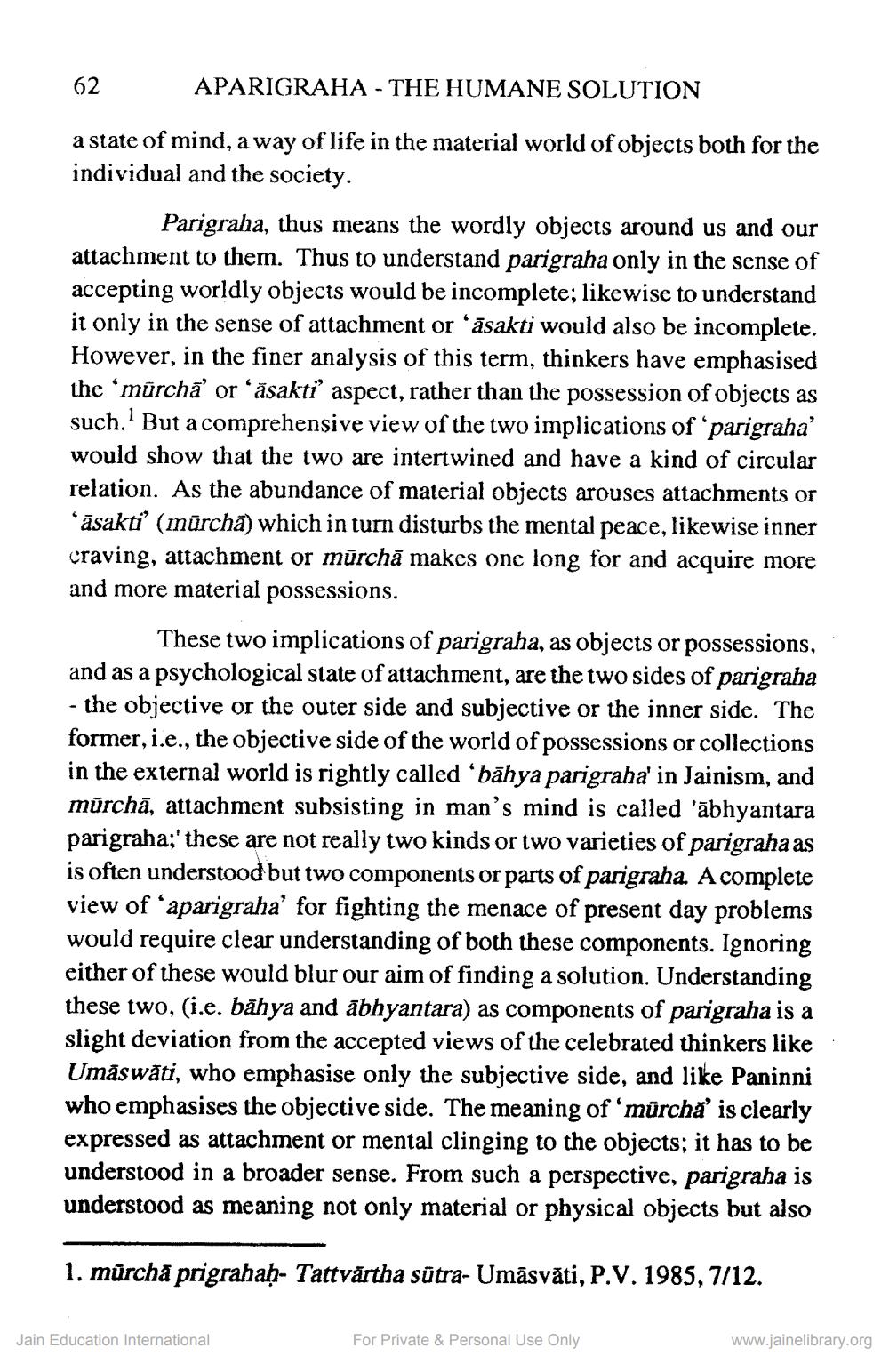________________
APARIGRAHA - THE HUMANE SOLUTION
a state of mind, a way of life in the material world of objects both for the individual and the society.
62
Parigraha, thus means the wordly objects around us and our attachment to them. Thus to understand parigraha only in the sense of accepting worldly objects would be incomplete; likewise to understand it only in the sense of attachment or 'āsakti would also be incomplete. However, in the finer analysis of this term, thinkers have emphasised the 'mürcha' or 'asakti' aspect, rather than the possession of objects as such. But a comprehensive view of the two implications of 'parigraha' would show that the two are intertwined and have a kind of circular relation. As the abundance of material objects arouses attachments or *āsakti (mūrcha) which in turn disturbs the mental peace, likewise inner craving, attachment or mūrcha makes one long for and acquire more and more material possessions.
These two implications of parigraha, as objects or possessions, and as a psychological state of attachment, are the two sides of parigraha - the objective or the outer side and subjective or the inner side. The former, i.e., the objective side of the world of possessions or collections in the external world is rightly called 'bahya parigraha' in Jainism, and mūrchā, attachment subsisting in man's mind is called 'abhyantara parigraha;' these are not really two kinds or two varieties of parigraha as is often understood but two components or parts of parigraha. A complete view of 'aparigraha' for fighting the menace of present day problems would require clear understanding of both these components. Ignoring either of these would blur our aim of finding a solution. Understanding these two, (i.e. bahya and abhyantara) as components of parigraha is a slight deviation from the accepted views of the celebrated thinkers like Umaswati, who emphasise only the subjective side, and like Paninni who emphasises the objective side. The meaning of 'murcha' is clearly expressed as attachment or mental clinging to the objects; it has to be understood in a broader sense. From such a perspective, parigraha is understood as meaning not only material or physical objects but also
1. mūrcha prigrahaḥ- Tattvärtha sūtra- Umāsvāti, P.V. 1985, 7/12.
Jain Education International
For Private & Personal Use Only
www.jainelibrary.org




